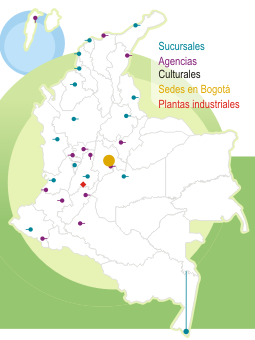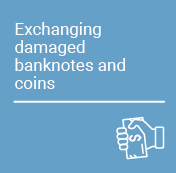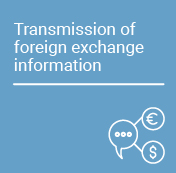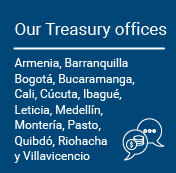Servicios
|
In this paper we develop a dynamic stochastic general equilibrium fiscal model for the Colombian economy. The model has three main components: the existence of non-Ricardian households, price and wage rigidities, and a fiscal authority that finances government spending partly with public debt. The…
|
|
The purpose of this study is twofold: First, it provides an empirical characterization of fiscal policy in Colombia over the last decades, by assessing the three most relevant macroeconomic factors: the behavior of fiscal policy over the business cycle; whether it has been coherent with the long-…
|
|
|
|
For the evaluation of macroeconomic policies Colombian authorities rely heavily, if not exclusively, on the operational framework known as the Financial Programming Model developed by the IMF in the 1950s. Based on this static framework, the formulation of fiscal policy in the country, just…
|
|
What is the Flexible Credit Line (FCL)?The FCL is an instrument created by the International Monetary Fund (IMF) and designed to provide early and flexible financing to countries with very strong economic fundamentals and sound institutional economic policy frameworks. It is a temporaryi and…
|
|
Since the second half of 2021, food prices in Colombia grew on average 12 percentage points more than in the other OECD countries and seven percentage points more than in the rest of Latin America.
|
|
According to the 2024 Opinion Panel by Cifras y Conceptos, Banco de la República continues to rank first among national institutions in terms of trust in Colombia, receiving a score of 80/100.
|
|
This paper investigates whether transforming the Consumer Price Index with a class of power transformations lead to an improvement of inflation forecasting accuracy. We use one of the prototypical models to forecast short run inflation which is known as the univariate time series ARIMA . This model…
|
|
|
|
This document explores the predictive power of the yield curves in Latin America (Colombia, Mexico, Peru and Chile) taking into account the factors set by the specifications of Nelson & Siegel and Svensson. Several forecasting methodologies are contrasted: an autoregressive model, a vector…
|
|
The opinions contained in this document are the sole responsibility of the authors and do not commit Banco de la República or its Board of Directors.
|
|
This study develops three exchange rate models as well as a simple statistical model defined as a random walk with a variable drift. The exchange rate models all use the purchasing power parity hypothesis to account for the long-term relationships between prices and the exchange rate, together with…
|
|
|
|
|
|
This paper studies foreign and domestic firms in Colombia and, in particular, whether these firms behave differently. The study uses a dataset containing the 2003 balance sheets and income statements for some 7,001 firms. The dataset was obtained from the Superintendencia de Sociedades.
|
|
It is known that the Colombian economy as well as the most of the Latin American economies experienced a period of relative economic stability until the end of seventies. However, since the early eighties, a common fact in these economies but Colombia, was a debt repudiation process, economic…
|
|
Banco de la República reports that it did not perform any purchase or sale of foreign currency in December 2016. In 2016, the Central Bank performed net foreign exchange sales for a total value of US$255.6 million.
In December, the Central Bank did not perform any purchases or sales of TES B…
|
|
Banco de la República reports that it did not perform any purchase or sale of foreign exchange currency in January 2017.
During the same month, the Central Bank did not perform any purchases or sales of TES B. At the end of January, the balance of the bonds in its possession was $8,985…
|
|
Foreign direct investment (FDI) not only plays a very important role as a source of external financing, but also allows for technology transfer, access to international markets, and the efficient reallocation of productive factors. All of this offers benefits to recipient economies in the form of…
|
|
Banco de la República’s FX intervention policy is described, with a focus on its objectives and main features. Then, based on a survey of the effectiveness of sterilized intervention in Colombia, it is argued that this tool is not useful to cope with the challenges posed by medium term external…
|
|
Most of the literature on the effectiveness of foreign exchange intervention has yet to reach a general consensus. In part, this is due to the different estimation methods in which exogenous variation is identified. In this sense, the use of heavily-dependent parametric models can sometimes…
|
|
Note: The "20 Day Moving Average" data calculated and published on the 2nd of January 2019 was re-calculated and republished on the 3rd of January because in its calculation the value of the Colombian exchange rate (known as the TRM) of December 31st 2018 was omitted. This correction was made on…
|
|
Formats
20 Day Moving Average Data
|
|
The Colombian Constitution and Law 31/1992 (Article 14) assigned Banco de la República a mandate to manage Colombia’s foreign reserves. Likewise, they also stipulate that the criteria to manage foreign reserves are safety, liquidity, and return. The purpose of this report is to explain how…
|
















































